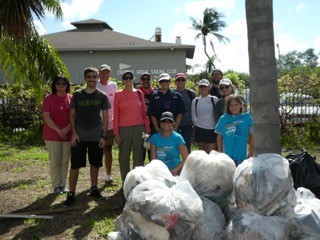

One study found that, for the first five years after entering the ocean from land, 77 percent of plastic remained on beaches or floated in coastal waters.

While much of the plastic floating around in the gyres has been found to be decades old, it turns out that more of the recently produced plastic stays near shorelines. Other critics say that Ocean Cleanup’s technique cannot get rid of the microplastics, and some believe lower tech strategies like beach cleanups are more effective because they prevent plastics from reaching the ocean in the first place. Protected species observers are always onboard to monitor and document all animals.Īnother concern is that Ocean Cleanup’s system could harm a little understood ecosystem called neuston-comprising insects, worms, snails, nudibranchs, crabs, sea anemones and more that float on the ocean surface much like the plastic-before scientists have even had sufficient time to study it. In addition, there are breathing ports for mammals, birds, or turtles that get caught in the retention zone, underwater cameras to ensure that marine life doesn’t get entangled, and a remote-controlled trigger release which opens one end of the retention zone if a creature is trapped. Ocean Cleanup counters that fish can escape its system. Several ocean plastic experts are also worried that Ocean Cleanup’s system will harm marine life and could kill creatures even if they are returned to the ocean. Ocean Cleanup says it offsets its emissions and that it is experimenting with biofuels. They point to the fossil fuel-powered ships towing the barriers that emit 660 tons of carbon dioxide per month of cleanup. While Ocean Cleanup has received a lot of attention for its efforts, some marine biologists believe its methods could actually do more harm than good. The organization’s System 03 is in the works it’s three times bigger and will reduce the cost per kilogram of plastic collected.

There it’s separated into different recycling streams, packaged, and sent to recycling facilities onshore. Once a week, the two vessels come together to close the barriers, pick up the retention zone, and empty the plastic out onto one of their decks. The natural flow caused by the movement directs plastic to the central retention zone. Ocean Cleanup’s system consists of a large floating net-like barrier three meters deep that forms a large U shape which is slowly towed by two ships. Its more successful current iteration has removed 220,000 pounds of plastic from the Great Pacific Garbage Patch. Its first collection system proved ineffective when plastic garbage was able to escape its barriers and a part broke off due to the winds and waves. The most high-profile effort to clean up ocean plastic is being conducted by Ocean Cleanup, a Dutch nonprofit whose goal is to get rid of 90 percent of floating plastic pollution in the ocean. While there are many identifiable floating items in the gyre-macroplastics such as cigarette butts, plastic bags, food containers, laundry baskets, plastic bottles, medical waste, fishing gear, and more-most of the plastic is the size of pepper flakes or smaller, broken down by the sun and waves over the years.ĭespite the fact that the majority of large plastic pieces are spread out across the vastness of the oceans and the rest may be too small to collect, there are a number of organizations attempting to clean up the oceans. It’s estimated that it contains 1.8 trillion pieces of plastic, weighing almost 90,000 tons. The Great Pacific Garbage Patch, the largest gyre, located between Hawaii and California, covers 1.6 million square kilometers, an area twice as big as Texas.


 0 kommentar(er)
0 kommentar(er)
